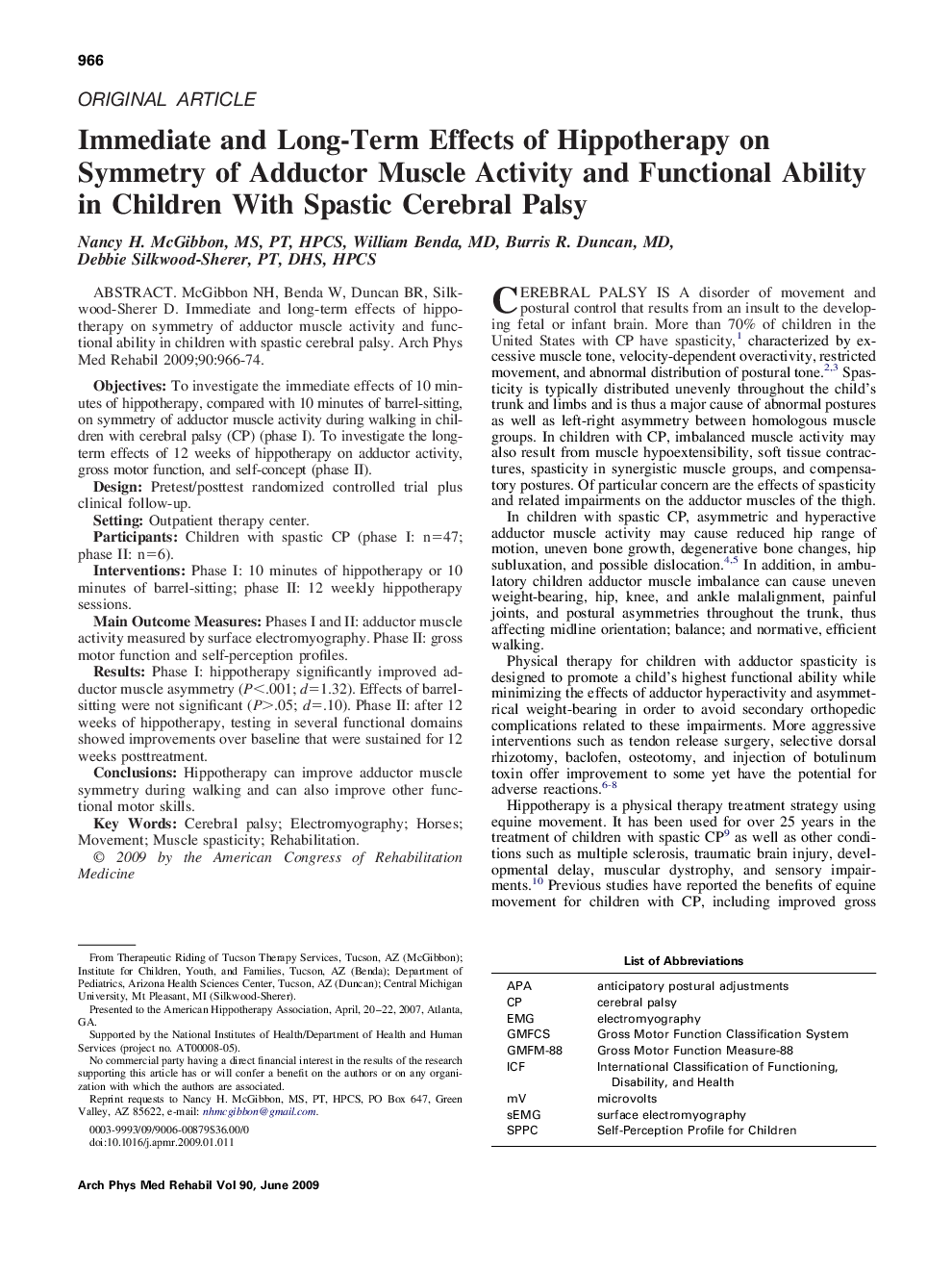| Article ID | Journal | Published Year | Pages | File Type |
|---|---|---|---|---|
| 3451505 | Archives of Physical Medicine and Rehabilitation | 2009 | 9 Pages |
McGibbon NH, Benda W, Duncan BR, Silkwood-Sherer D. Immediate and long-term effects of hippotherapy on symmetry of adductor muscle activity and functional ability in children with spastic cerebral palsy.ObjectivesTo investigate the immediate effects of 10 minutes of hippotherapy, compared with 10 minutes of barrel-sitting, on symmetry of adductor muscle activity during walking in children with cerebral palsy (CP) (phase I). To investigate the long-term effects of 12 weeks of hippotherapy on adductor activity, gross motor function, and self-concept (phase II).DesignPretest/posttest randomized controlled trial plus clinical follow-up.SettingOutpatient therapy center.ParticipantsChildren with spastic CP (phase I: n=47; phase II: n=6).InterventionsPhase I: 10 minutes of hippotherapy or 10 minutes of barrel-sitting; phase II: 12 weekly hippotherapy sessions.Main Outcome MeasuresPhases I and II: adductor muscle activity measured by surface electromyography. Phase II: gross motor function and self-perception profiles.ResultsPhase I: hippotherapy significantly improved adductor muscle asymmetry (P<.001; d=1.32). Effects of barrel-sitting were not significant (P>.05; d=.10). Phase II: after 12 weeks of hippotherapy, testing in several functional domains showed improvements over baseline that were sustained for 12 weeks posttreatment.ConclusionsHippotherapy can improve adductor muscle symmetry during walking and can also improve other functional motor skills.
